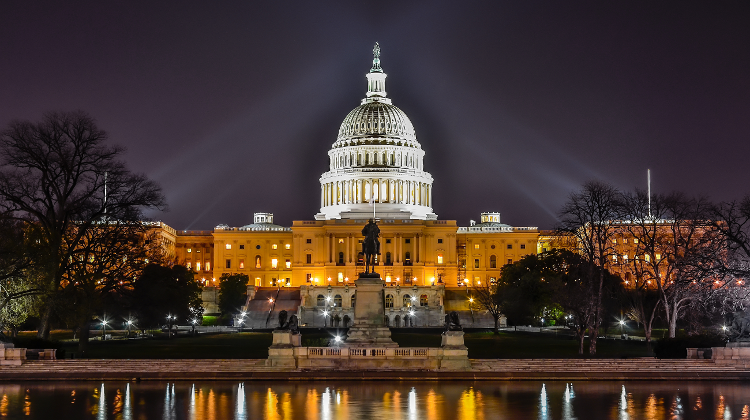Posted 2017-06-09
How the Financial CHOICE Act Would Dismantle the CFPB

A new bill that would declaw the Consumer Financial Protection Bureau and weaken Dodd-Frank will be voted on soon.
Updated 6/9/2017: As predicted, the Financial CHOICE Act made it through the House yesterday. It passed without any Democratic support and nearly unanimous Republican support. The bill is still expected to fail in the Senate, but The New York Times reports that "important parts of it could pass through the budget reconciliation process." It does not appear that these "important parts" include the gutting of the CFPB. Rather, it's the repealing of the Orderly Liquidation Authority that could pass with only 51 votes.
Original article published 5/10/2017:
Since taking office, Trump has worked with Congress to ease regulations put in place by the 2010 Dodd-Frank Wall Street Reform and Consumer Protection Act. So far, though, nothing has been repealed.
That may change with the Financial CHOICE Act – a bill that would severely weaken Dodd-Frank. It will soon go before the full House.
A Brief Breakdown of the Bill
The “CHOICE” in the bill’s name stands for Creating Hope and Opportunity for Investors, Consumers, and Entrepreneurs. The 589-page bill covers a lot of ground, but here are some key points:
- Severely weakens the CFPB (more on that later)
- Repeals Orderly Liquidation Authority, taking away the federal government’s ability to save failing banks
- Repeals Dodd-Frank’s Durbin Amendment, removing limits on what banks can charge retailers for credit and debit card swipes
- Softens stress testing procedures for banks
- Allows the SEC to increase fines for deception and fraud
See the Financial CHOICE Act executive summary for more information about the bill's major points.
How It Started
The act was first introduced last year by House Financial Services Committee Chairman Jeb Hensarling. Its updated version finally passed through the committee last week.
About the bill, Hensarling said, “The Financial CHOICE Act ends bailouts so Washington can never again pick taxpayers’ pockets and hand the money over to big banks … Our plan replaces Dodd-Frank’s growth-strangling regulations on small banks and credit unions with reforms that expand access to capital so small businesses on Main Street can grow and create jobs.”
What It Does to the CFPB
It’s no secret that Congress hopes to use the Financial CHOICE Act to dismantle the CFPB. The bill would:
- Allow the president to remove the head of the agency – so, Trump could fire Richard Cordray and replace him with someone else.
- Give Congress CFPB oversight by letting it strike down financial rules proposed by the bureau. Congress would also set its budget.
- Take away the CFPB’s ability to regulate payday lenders and large banks while also removing its UDAAP authority to go after companies with “unfair, deceptive, or abusive acts and practices.”
- Block public access to the 1.1 million consumer complaints in the CFPB’s database.
We’d say that after all this, the CFPB would be the same in name only – but the bill changes the bureau's name to the Consumer Law Enforcement Agency (CLEA).
What the Critics Say
Consumer advocacy groups have already started to fight the bill.
Democrats in Congress have dubbed it the “Wrong Choice Act.”
This is what the Center for Responsible Lending Executive Vice President, Debbie Goldstein, said about the act: “It is clear that payday lenders and other legal loan sharks are on the march in Congress and with the Administration. These actions represent a push to expand debt traps and abusive practices by financial predators.”
What the Supporters Say
Financial Services Roundtable CEO Tim Pawlenty supports the bill and recently pointed out ways it could help the economy.
Pawlenty said, “Improvements to financial regulations can lead to economic growth, while still protecting taxpayers and consumers. We thank the Committee for its leadership in driving the regulatory reform debate forward and look forward to working with policymakers to craft a regulatory reform system that unlocks more economic opportunity for all Americans.”
What’s Next?
The bill should make it through the House. Then, it’ll likely die in the Senate by the hand of a Democratic filibuster. The Senate would need to come up with 60 votes to break the filibuster, and there’s every reason to believe that the 52 Republicans in the Senate would be unable to convince eight Democrats to cross the aisle.
One thing is clear – Republicans are looking for ways to dismantle Dodd-Frank and the CFPB. While the Financial CHOICE Act may not be the answer, Washington will continue to look for one.